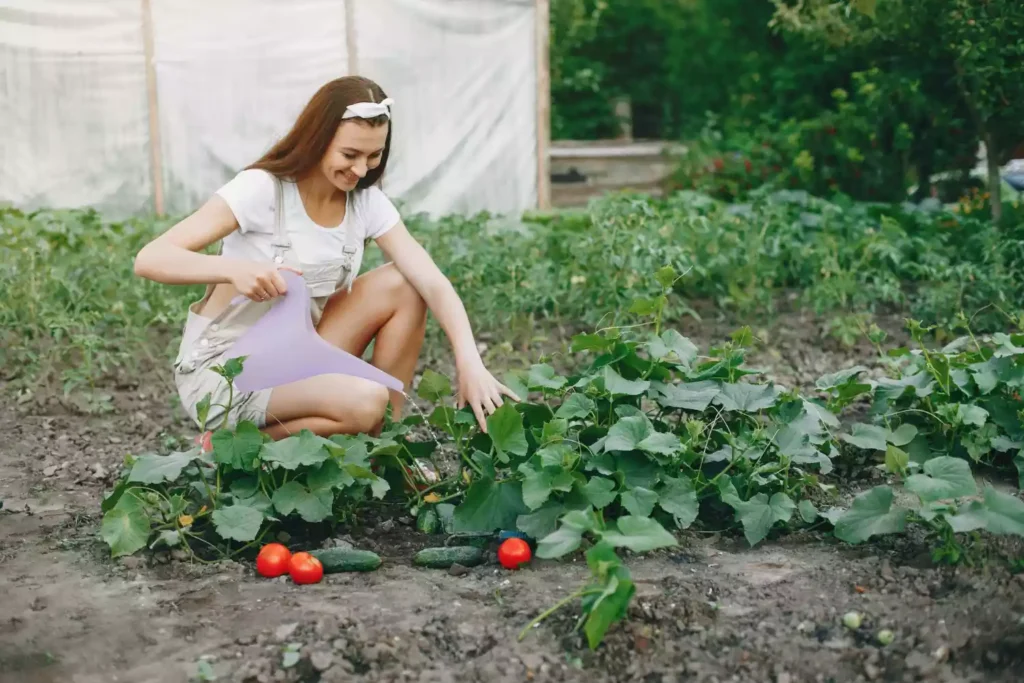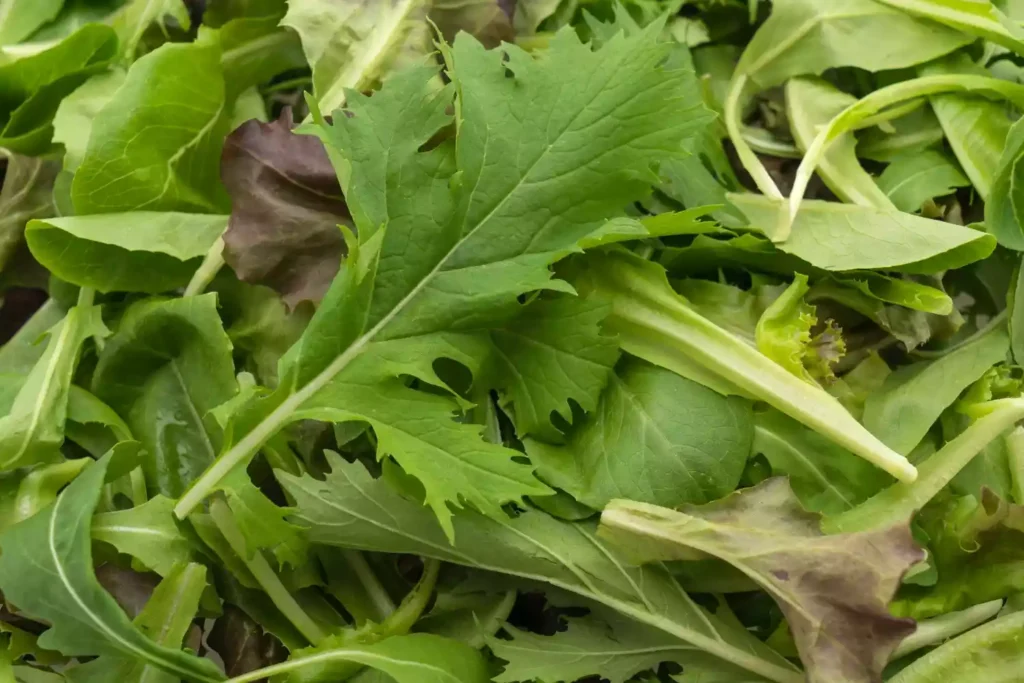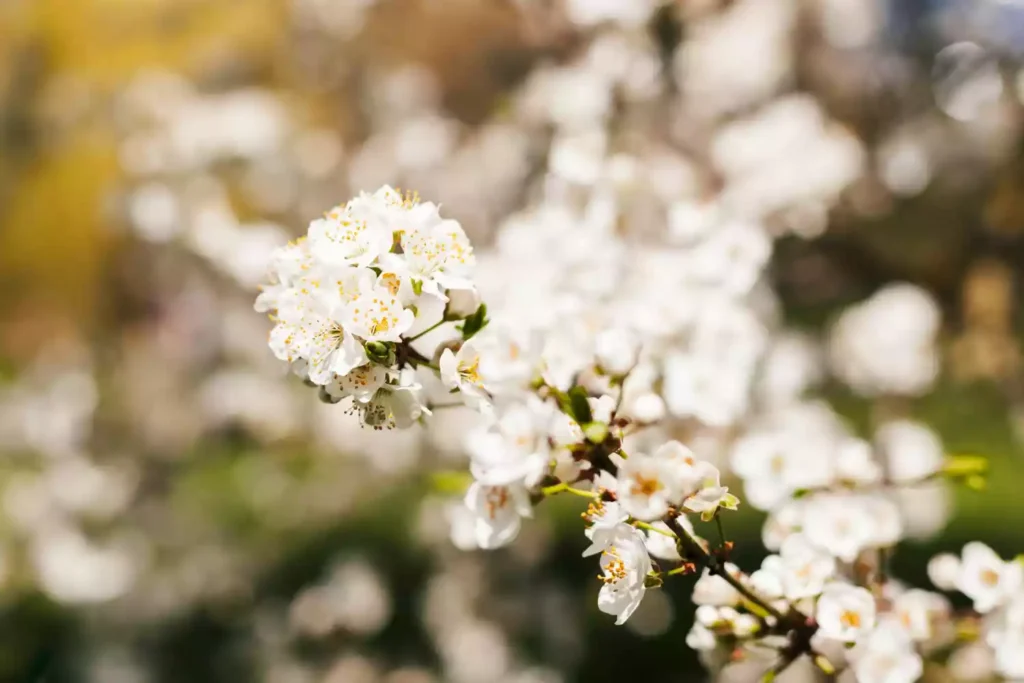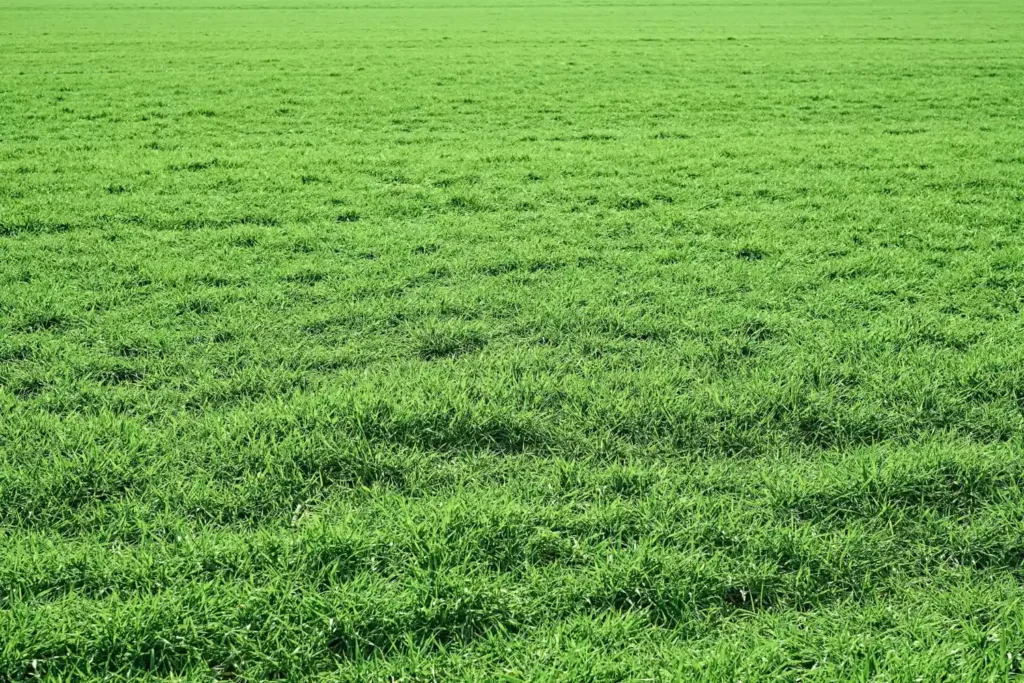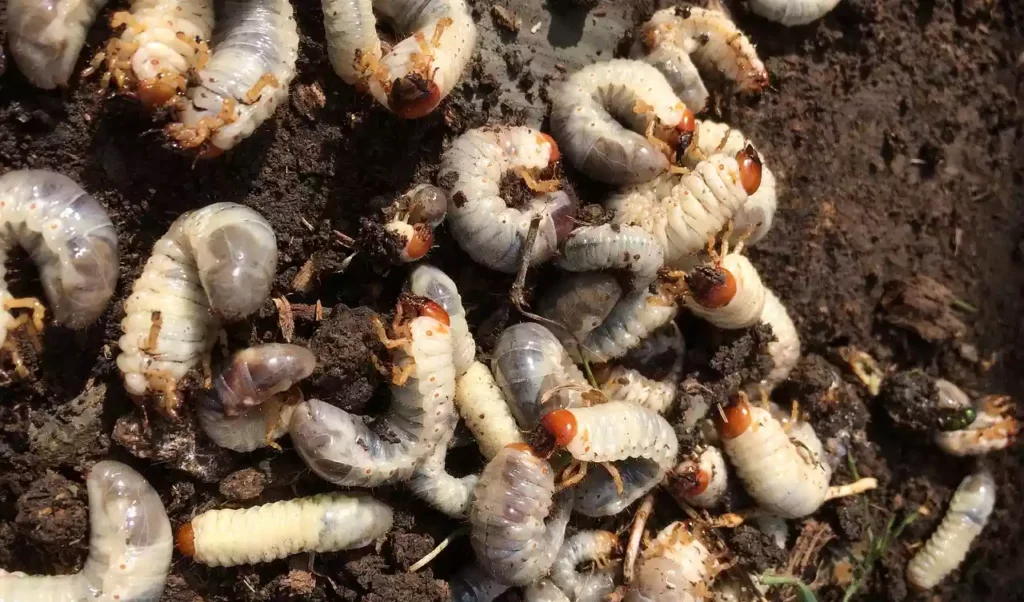As someone who loves gardening and growing strawberries, I always look for ways to improve the health and yield of my plants. One of the best methods I have discovered is companion planting. Companion planting involves growing different plants together that mutually benefit each other, creating a natural ecosystem of checks and balances.
And when it comes to strawberries, there are a variety of companion plants that can enhance their growth, improve their flavor, and protect them from pests and diseases.
In this article, I will share with you 25 strawberry companion plants that you can grow with your strawberries. From vegetables to flowers to herbs, each companion plant has unique benefits that can help your strawberries thrive.
Whether you are a seasoned gardener or a beginner, incorporating companion planting into your strawberry growing process can improve the health and resilience of your garden ecosystem, resulting in a bountiful harvest of delicious strawberries. So, let’s dive in and explore the benefits of growing strawberries with companion plants.
Lettuce
Lettuce is a versatile addition to any strawberry patch, filling in the gaps and maximizing space like a puzzle piece, allowing for a bonus harvest of fresh greens alongside those juicy red berries.
As a nitrogen-fixing plant, lettuce helps to enrich the soil and provides a living mulch to retain moisture and suppress weeds.
Interplanting lettuce also attracts natural enemies of pests, creating a built-in control method.
To ensure a successful lettuce and strawberry companionship, it’s important to choose the right varieties of lettuce.
Loose-leaf varieties like butterhead and oakleaf lettuce are great choices as they don’t require as much space as other types of lettuce.
When planting, be sure to give each lettuce plant enough space to grow to its full size and to not overcrowd the strawberry plants.
By maximizing space in this way, you can enjoy a double harvest from the same garden bed.
Spinach
You’ll be surprised to learn that adding spinach to your garden not only maximizes space but also benefits your breakfast smoothies and desserts with its nutrient-rich leaves and soil-enhancing properties. This leafy green is packed with vitamins A and C, iron, and calcium, making it a great addition to any diet. Plus, spinach is versatile in the kitchen and can be used in salads, omelets, and even as a substitute for basil in pesto.
To grow spinach successfully as a companion plant to strawberries, it’s important to provide it with the right growing conditions. Spinach prefers well-draining, fertile soil with a pH of 6.0-7.5 and needs consistent moisture to prevent bolting. To avoid potential pests such as flea beetles and leaf miners, it’s best to keep spinach plants covered with row covers or to plant them in the fall or early spring when these pests are less active.
With its health benefits, cooking ideas, and soil-enhancing properties, adding spinach to your strawberry patch is a win-win for both your garden and your kitchen.
Garlic
If you want to add a flavorful and pest-repelling crop to your garden, garlic is the perfect companion for your breakfast smoothie and dessert-loving strawberries. Not only does garlic add a pungent flavor to your dishes, but it also has numerous benefits when planted alongside strawberries.
Garlic is known for its ability to repel pests and diseases, making it an excellent choice for keeping your strawberry patch healthy. Planting garlic with strawberries can also improve the taste and yield of your berries.
When planting garlic with strawberries, it’s important to choose the right variety. Softneck garlic, such as California Early and Italian Late, are the best choices for companion planting with strawberries.
To plant garlic with strawberries, simply break apart the garlic bulb into individual cloves and plant them about 6 inches away from the strawberry plants. Garlic should be planted in the fall, about 4-6 weeks before the first frost.
By springtime, your garlic will sprout and begin to provide its pest-repelling benefits to your strawberry patch.
Beets
Adding a colorful and nutrient-rich root vegetable to your garden can have surprising benefits for your berry-loving plants.
Beets are an excellent companion plant for strawberries due to their nitrogen-fixing properties, which improve soil fertility and structure for optimal strawberry growth. By interplanting beets with strawberries, you can create a symbiotic relationship that benefits both crops.
Beets draw nitrogen from the air and release it into the soil, making it available for strawberry plants to use. This reduces the need for synthetic fertilizers and allows strawberries to thrive in a nutrient-rich environment.
In addition to providing nutrients, beets also help with pest control in strawberries. The strong scent of beets repels pests like aphids and spider mites, which can damage strawberry plants. By planting beets alongside strawberries, you create a natural barrier that protects your berries from these unwanted visitors.
As a result, your strawberry yield and quality can increase, while the need for pesticides decreases. With the many benefits of interplanting beets with strawberries, it’s easy to see why this colorful root vegetable is a great addition to any strawberry patch.
Carrots
Carrots are not only a delicious and versatile vegetable, but they also play a crucial role in enhancing the growth and health of your berry patch.
Interplanting carrots with strawberries has numerous benefits, including loosening the soil and increasing yields. Carrots are also known for their ability to suppress weeds, which can save you time and energy when maintaining your garden.
When planting carrots with strawberries, it’s important to properly space the plants to avoid overcrowding. Aim to plant carrots in rows 12-18 inches away from the strawberry plants to ensure there is enough room for both crops to grow.
It’s also important to keep an eye out for common pests that can affect both strawberries and carrots, such as aphids and slugs. Consider using natural pest control methods, such as companion planting with herbs like mint and basil, to avoid the use of harmful pesticides.
Some of the best varieties of carrots to plant with strawberries include Danvers, Chantenay, and Nantes, which are all known for their sweet flavor and crisp texture.
By caring for both strawberries and carrots together, you’ll not only enjoy a bountiful harvest, but also a healthy and thriving garden ecosystem.
Rhubarb
You may not have realized it before, but growing rhubarb can be a great way to improve the health and yield of your strawberry plants.
Rhubarb is a hardy perennial that requires minimal maintenance, making it an ideal companion plant for strawberries. When planted nearby, rhubarb can provide light shade for your berry bushes during hot summer days, preventing them from overheating and drying out. Additionally, the deep roots of rhubarb can loosen the soil beneath your strawberry plants, improving drainage and allowing for better nutrient uptake.
Not only is rhubarb a valuable companion plant for strawberries, it also has numerous health benefits and culinary uses. Rhubarb is high in fiber, vitamins C and K, and antioxidants, making it a nutritious addition to any diet. It can be cooked and used in a variety of dishes, from pies and crumbles to sauces and jams. Rhubarb can also be preserved by freezing or canning, allowing you to enjoy its tart flavor and health benefits all year round.
So why not consider adding some rhubarb to your garden and enjoying the many benefits it has to offer?
Broccoli
If you’re looking for a complementary crop that can boost the disease resistance of your garden, broccoli might be a great choice to grow with strawberries.
Broccoli is a member of the brassica family, which means it shares many of the same soil and nutrient requirements as strawberries. This makes it an ideal companion plant, as it can help improve soil health and prevent soil-borne diseases in the strawberry bed.
Broccoli is also known for its ability to attract beneficial insects such as ladybugs, lacewings, and parasitic wasps, which can help control pests that may harm strawberries.
When planted in close proximity to strawberries, broccoli can help create a diverse and healthy ecosystem that benefits both crops.
To have a successful broccoli companion planting with strawberries, it’s important to choose the right varieties of broccoli. Look for varieties that are compact and have a shorter growing season, such as ‘De Cicco’ or ‘Calabrese’.
These types of broccoli won’t take up too much space in the garden and will be ready to harvest before the strawberries start to spread out. When planting broccoli, make sure to space them at least 18 inches apart from each other and from the strawberry plants.
This will allow the broccoli to grow without competing for nutrients and sunlight with the strawberries. Lastly, when the broccoli is ready to harvest, be sure to cut the heads off at the stem rather than pulling them out of the ground.
This will prevent any damage to the strawberry roots and ensure a healthy and productive garden.
Bush Beans
Now that we’ve learned about growing broccoli with strawberries, let’s move on to another companion plant: bush beans.
Growing bush beans with strawberries has many benefits, including increasing soil fertility, maximizing yields, and reducing pest pressure.
Bush beans fix nitrogen in the soil, which is essential for the healthy growth of strawberries. Additionally, they can help to suppress weeds and provide natural shade to the strawberries during hot summer days.
When it comes to choosing the best varieties of bush beans to plant with strawberries, look for those that have smaller bush sizes, such as Blue Lake, Roma, or Provider.
These varieties are less likely to compete with the strawberries for space and nutrients. To interplant bush beans and strawberries for maximum yields, plant the bush beans in rows between the strawberry plants, leaving about 3-4 inches of space between each bean plant.
This allows for both plants to grow and flourish without overcrowding each other.
Scallions
Congratulations, savvy gardener! You’re about to discover the perfect partner for your delectable red gems – those scrumptious scallions that will not only repel pests but add a zesty kick to your salads.
Growing scallions is a breeze, and they make for great companions to your beloved strawberries. There are three main varieties of scallions: white, yellow, and red. White scallions have a milder taste, while yellow scallions have a slightly sweeter flavor and red scallions are the most pungent.
When planting scallions, make sure the soil is well-draining and has a pH between 6.0 and 7.0. Plant them in rows 6 inches apart and thin them to 2 inches apart as they grow. Scallions grow quickly and can be harvested in as little as 20 days, but they can be left to grow for up to 60 days for larger bulbs.
When harvesting scallions, pull them out of the ground by the base of the bulb and rinse them off with water. Scallions can be used in a variety of recipes, from stir-fries to soups to salads. They add a fresh, zesty flavor that pairs perfectly with sweet juicy strawberries.
If you’re looking for a way to incorporate scallions into your diet, try making a simple strawberry and scallion salad. Slice up some fresh strawberries and chop up some scallions, then toss them together with a light vinaigrette made with olive oil, balsamic vinegar, and honey. The sweetness of the strawberries pairs perfectly with the tangy, zesty flavor of the scallions, and the vinaigrette adds a nice depth of flavor.
This salad is not only delicious, but also packed with nutrients – strawberries are high in vitamin C and antioxidants, while scallions are a good source of vitamin K and folate. So go ahead and plant some scallions alongside your strawberries – not only will they keep pests at bay, but they’ll also add a pop of flavor to your dishes.
Asparagus
Get ready to elevate your garden game with the perfect addition to your crop – asparagus. This versatile and delicious vegetable will not only complement your garden, but also make your taste buds sing with joy.
When it comes to growing strawberries, asparagus is a great companion plant due to its nitrogen-fixing abilities. It enriches the soil with nitrogen, which strawberries need to develop and fruit. Other nitrogen-fixing companions for strawberries include lupins, clover, and bush beans. However, asparagus is a great choice due to its complementary growing seasons and root systems.
To get the most out of your asparagus and strawberry companion planting, it is important to plant them at the optimal distance. Asparagus should be planted at least 2-3 feet away from strawberry plants to avoid competition for nutrients and space. Additionally, intercropping asparagus and strawberries can improve ecological resilience, as the two plants have different growth patterns and different root systems.
When planting asparagus, it is important to choose a sunny spot with well-draining soil and to fertilize regularly with organic matter.
Radish
When you’re craving a crispy, refreshing addition to your garden that will also maximize space and yield an extra harvest, try interplanting radishes with your favorite crops.
As a companion plant for strawberries, radishes can help repel pests like aphids and root maggots. They also loosen the soil around strawberry plants, allowing for better water and nutrient uptake.
To plant radishes with strawberries, sow the seeds in rows between the strawberry plants or directly in the aisles of the strawberry patch. Be sure to leave at least 3 inches of space between each radish seed to allow for proper growth.
Radishes mature quickly, so be sure to harvest them as soon as they are ready to avoid overcrowding and competition with the strawberries. Enjoy the peppery crunch of these root vegetables in salads, sandwiches, or as a simple snack.
Pairing radishes with strawberries is not only delicious but also beneficial for the health of your garden.
Purslane
Adding purslane to your garden is like inviting a superhero to fight off nematodes and turn your soil into a golden treasure trove.
This hardy plant is a powerhouse of nutrition, containing high levels of omega-3 fatty acids, vitamins A, C, and B, and minerals such as iron, calcium, and potassium.
Purslane is also a natural remedy for many ailments, including inflammation, heart disease, and diabetes.
But what makes purslane a great companion plant for strawberries is its ability to repel destructive nematodes and improve soil quality through desalination.
Nematodes are microscopic worms that feed on plant roots and cause stunted growth and yield loss.
Purslane’s roots release compounds that repel nematodes, while also breaking up compacted soil and increasing water retention.
As a result, strawberries planted with purslane are healthier, more productive, and tastier.
Growing purslane is easy and low-maintenance, making it a perfect addition to any garden.
This succulent plant thrives in full sun and well-draining soil, but can also tolerate drought and poor soil conditions.
Purslane can be grown from seeds or cuttings, and can be harvested throughout the growing season.
In addition to its health benefits, purslane is a versatile ingredient in cooking, with a tangy and slightly sour flavor that complements salads, soups, and stews.
Purslane can also be used to make pesto, salsa, and pickles.
With its many benefits and uses, purslane is a must-have companion plant for any strawberry grower looking to improve soil health and boost yields naturally.
Sweet Alyssum
Purslane is a great companion plant for strawberries, as it can repel destructive nematodes and aid in desalination of soil when left as a ground cover in strawberry patches. But another flower that I find particularly effective in attracting beneficial insects to my strawberry patch is sweet alyssum.
Sweet alyssum is a low-growing, annual flower that thrives in sunny locations with well-drained soil. It is a versatile and easy-to-grow plant that can be sowed directly into the ground or started indoors and transplanted.
One of the main benefits of planting sweet alyssum with strawberries is its ability to attract beneficial insects, such as ladybugs, lacewings, and hoverflies, which are natural predators of common strawberry pests like aphids and spider mites. This natural pest control can help reduce the need for harmful pesticides and improve overall plant health.
Additionally, sweet alyssum has a sweet fragrance that can attract pollinators like bees and butterflies, which can help increase strawberry yields. In fact, studies have shown that strawberries grown with companion plants like sweet alyssum have higher sugar content and better flavor than those grown in monoculture.
Yarrow
You’ll be impressed by how yarrow can attract even more pollinators and predator bugs to your garden, helping to keep your strawberry plants healthy and thriving. Yarrow is a versatile herb that acts as a natural insect repellent, while also attracting beneficial insects like ladybugs and lacewings. Its flowers are rich in nectar and pollen, making it a favorite among bees and butterflies.
One of the benefits of yarrow as a companion plant is its impact on strawberry flavor. Yarrow contains volatile oils that can enhance the flavor of strawberries, giving them a more complex and nuanced taste. Additionally, yarrow can help repel pests like aphids and spider mites, reducing the need for harmful pesticides.
Yarrow’s role in improving soil fertility is also noteworthy, as it has the ability to fix nitrogen in the soil and make important nutrients more available to strawberries. Overall, yarrow is a valuable addition to any strawberry garden, providing multiple benefits to both the plants and the ecosystem.
Borage
If you’re looking for a versatile herb that can enhance the flavor of your garden’s bounty while naturally repelling pests and attracting beneficial insects, borage is an excellent choice.
As a companion plant for strawberries, borage is particularly useful because it repels pests like tomato hornworms, cabbage worms, and Japanese beetles, while attracting beneficial insects like bees and predatory wasps. Borage also improves strawberry flavor and yields by enhancing their sugar-to-acid ratio, which means sweeter and juicier berries for you to enjoy.
To effectively interplant borage with strawberries, plant them in the same row or bed, spacing them about 18 inches apart. Borage plants can grow up to 2 feet tall, so keep that in mind when planning your garden layout.
Plant borage alongside other beneficial flowers like sweet alyssum, yarrow, and nasturtiums to create a diverse garden ecosystem that supports pollinators, repels pests, and enhances soil fertility.
With borage and other companion plants, you can enjoy a bountiful strawberry harvest while minimizing your use of pesticides and creating a beautiful and sustainable garden.
White Clover
Using white clover as a living mulch in your garden may seem counterintuitive, but it can actually improve soil health and reduce the need for synthetic fertilizers. White clover has nitrogen-fixing abilities, which means it takes nitrogen from the air and converts it into a form that can be used by plants. This can boost the growth and yield of strawberries, which require high levels of nutrients to produce healthy fruit.
To incorporate white clover into strawberry beds, simply scatter the seeds on the soil surface and lightly rake them in. The clover will grow and spread, creating a green carpet that suppresses weeds and retains moisture in the soil. As a living mulch, white clover can also protect strawberry plants from extreme temperature fluctuations and erosion. Furthermore, white clover can attract beneficial insects such as bees and ladybugs, which can help pollinate strawberries and control pests naturally.
Overall, using white clover as a living mulch in strawberry patches can have numerous benefits for both the plants and the soil. White clover’s impact on soil health extends beyond nitrogen fixation. As the clover grows and dies, it adds organic matter to the soil, which can improve soil structure, water-holding capacity, and nutrient retention. Additionally, the presence of white clover can increase microbial activity in the soil, which can break down organic matter and release nutrients for plant uptake.
In conclusion, incorporating white clover into strawberry beds can reduce the need for synthetic fertilizers, improve soil health, and increase the overall productivity of the garden.
French Marigold
White clover is a common companion plant for strawberries that enriches the soil with nitrogen and acts as a living mulch. Now let’s talk about another companion plant that’s effective in pest control and soil health: French Marigold.
French Marigold is often used in companion planting to deter pests and attract beneficial insects such as hoverflies, lacewings, and ladybugs. It’s known for its ability to repel root knot nematodes, whiteflies, and rabbits. It also emits a strong odor that repels pests such as aphids, thrips, and spider mites. The French Marigold is a great alternative to Tagetes, which is often used in commercial agriculture but can become invasive in gardens.
The French Marigold is easy to grow and requires full sun to partial shade. It thrives in well-drained soil and prefers to be watered regularly. Deadheading spent flowers will encourage more blooms throughout the growing season.
In addition to its pest-repelling properties, French Marigold also has benefits for soil health. It secretes a substance called alpha-terthienyl that helps suppress soil-borne pathogens and improve soil structure. It also attracts pollinators such as bees and butterflies to the garden.
Overall, French Marigold is a great addition to any strawberry patch and can improve the health and productivity of your garden.
Lupine
To enhance the growth and health of your garden, consider incorporating lupine as a complementary plant within your patch. Not only does lupine provide a beautiful pop of color with its vibrant purple and blue flowers, but it also has numerous benefits as a companion plant for strawberries.
Lupine is known for its ability to fix nitrogen in the soil, which can provide essential nutrients for strawberry plants. Additionally, lupine’s deep roots can help break up compacted soil, allowing for better water and nutrient uptake by the surrounding plants. It also attracts beneficial insects such as ladybugs and lacewings, which can help control common strawberry pests like aphids and thrips.
Some varieties of lupine that pair well with strawberries include Russell hybrids and dwarf lupines. For optimal growing conditions, lupine prefers well-drained soil with full sun to partial shade.
Incorporating lupine into your strawberry patch can improve soil health and provide a boost to your strawberry plants.
Nasturium
Lupines are considered by some gardeners to be the best companions for strawberries, but they’re not the only option. Another great choice is nasturtiums.
These beautiful flowers are not only pleasing to the eye, but they also provide a range of benefits to strawberries and other plants in the garden. If you want to grow nasturtiums with strawberries, it’s important to choose the right variety. Dwarf varieties like ‘Jewel Mix’ work best as they won’t overshadow the strawberries.
Nasturtiums are easy to grow from seed, and they prefer well-drained soil with plenty of sun. Once planted, they require little maintenance and can even tolerate some drought.
Nasturtiums have a unique flavor that is peppery and slightly sweet, making them a great addition to salads, sandwiches, and even pesto. They’re also high in vitamin C and have natural antibiotic properties.
To save seeds for next year’s crop, simply let the flowers dry out on the plant and collect the seeds once they’ve turned brown.
Nasturtiums are a great choice for anyone looking to add some color and flavor to their strawberry patch.
Phacelia
Oh, so you’re not interested in learning about the amazing benefits of phacelia, the cover crop and border plant that can improve soil fertility and prevent soil-borne diseases? Well, let me tell you, phacelia is a powerhouse plant that can work wonders in your strawberry garden.
Not only does phacelia act as a living mulch, reducing weed growth and retaining moisture in the soil, but it also attracts beneficial insects like hoverflies, lacewings, and ladybugs.
These insects prey on common strawberry pests like aphids and thrips, keeping your strawberries healthy and free from harmful infestations.
Plus, phacelia is a nitrogen-fixer, meaning it converts nitrogen from the air into a form that strawberries can use for growth and fruiting.
Planting phacelia as a cover crop in the off-season can also help to prevent soil erosion and improve soil structure, leading to healthier, more productive strawberry plants.
So, if you’re looking for a companion plant that can improve soil health, attract beneficial insects, and reduce pest pressure in your strawberry garden, consider giving phacelia a try.
Conclusion
In conclusion, adding companion plants to your strawberry garden can significantly enhance the growth and health of your strawberries. With the right companions, you can attract natural enemies of pests, provide shade, nutrients, and flavor, and create an ecosystem of checks-and-balances to protect your strawberries from multiple angles.
There are many companion plant options to choose from, each with their own unique benefits. From lettuce to phacelia, you can experiment with different companions to discover the perfect combination for your strawberry garden.
By incorporating these plants into your garden, you can not only improve the yield and quality of your strawberries but also create a beautiful and diverse garden ecosystem. So, don’t hesitate to try out different companion plants. Happy planting!

